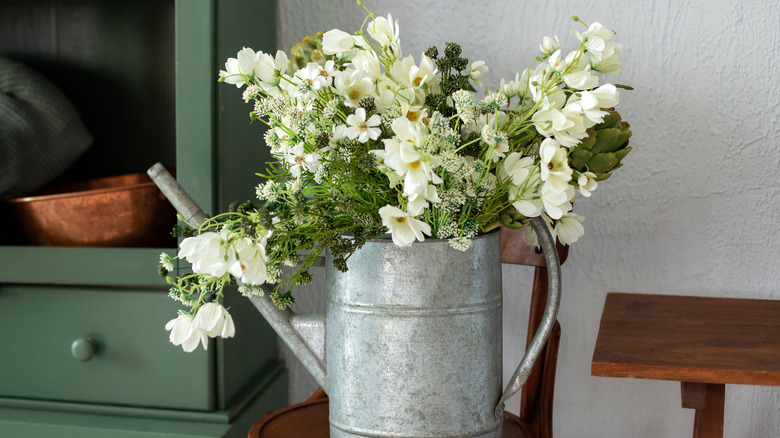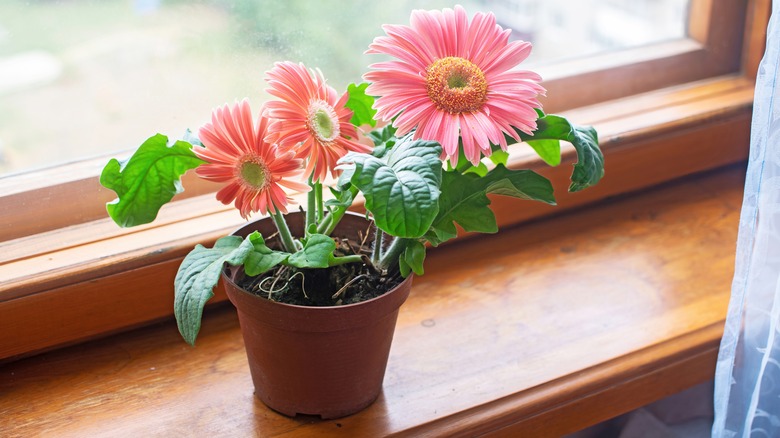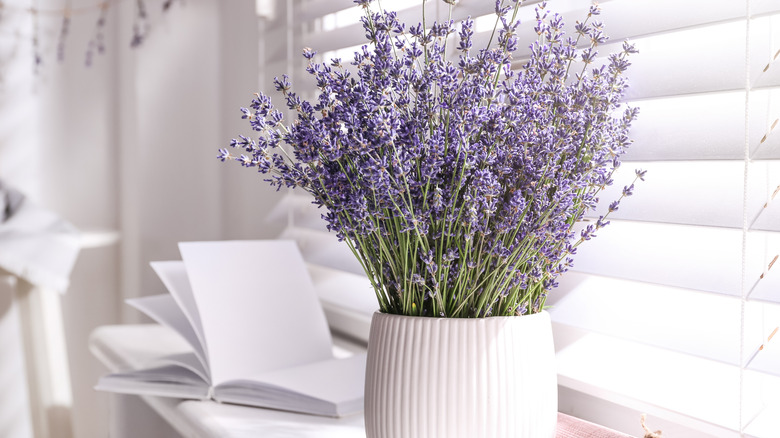The Best Kind Of Wildflower To Grow Indoors
Tulips and roses are all gorgeous flowers to display in your home, but few flowers are as gorgeous as those that grow naturally in pastures and meadows. Not only that, but cut flowers die quickly, and most flowering plants are incredibly demanding. Instead, try adding wildflowers to your indoor garden collection.
Depending on your region, there are a variety of wildflowers growing around you. However, when you grow them indoors, you have the freedom to nurture any wildflower you want, regardless of location, hardiness zone, etc. The easiest way to do this would be to visit your local garden center and pick up a pack of local wildflower seeds, but other stunning wildflowers include bee balm, primroses, coneflowers, violets, daisies, and milkweeds. That being said, only some of these can survive permanently indoors and may require grow lights, while others can only survive indoors partially, and some can only be sown indoors.
Gerbera daisies and black-eyed Susans
Daisies are some of the most iconic and easily recognizable wildflowers, and one species of the flower is perfect for growing indoors. Gerbera daisies are often seen cut and arranged in flower bouquets, but they're also a great choice to pot inside. Like most wildflowers, they love lots of bright but indirect light, semi-frequent watering, and regular fertilization. They'll also need to be deadheaded regularly. Other than that, they're quite low-maintenance. They can be susceptible to fungus gnats, but that can be counteracted with proper air circulation.
Black-eyed Susans are one of the most popular summer hanging or trellising flowers and grow natively in most of the eastern region of the country. They can also be grown indoors given the proper provisions — mainly, lots and lots of full sunlight. Otherwise, they're quite low-maintenance and very hardy. The easiest way to grow them indoors would be to start with a nursery plant and grow it in a hanging basket. Alternatively, you could use a trellis. Whichever you choose, water them frequently, and fertilize them weekly starting in the summer until the fall.
Wildflowers to avoid and alternatives
Other fantastic wildflowers to grow indoors are violets. One of the most popular indoor varieties are African violets, which are a bit finicky and hard to care for, but the payoff is worth it. This specific species loves lots of sun, high humidity levels, and warmth. Many people opt to grow them under grow lights. You can also grow wild violets either from seed or a starter plant, but be aware that they're annuals. Meaning you'll only get one year of growth from them, even indoors. They're also not the easiest to grow indoors either, requiring lots of sun, moist soil, and colder temperatures. That isn't to say you can't grow them successfully inside, but African violets are an easier and more practical alternative.
Many people love wildflower varieties like yarrow, milkweed, goldenrod, and fireweed for their romantic, delicate appearance. However, these varieties are very difficult, if not impossible, to grow permanently indoors. Some of them may benefit from being brought inside during the winter months, but they won't be lasting additions to your houseplants. Instead, consider a lavender plant. It grows wildly in the Mediterranean and has a similar shape, color, and overall aesthetic. Most importantly, though, it can be grown like a regular houseplant, requiring bright sun, regular watering, and mild temperatures. Not to mention, your house will smell wonderful as a result.


